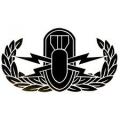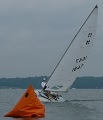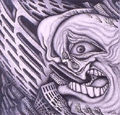Hi all,
So i've finally set my sights on building an 818c, and I've been working through the logistics of the build and trying to really iron out the path I want to take, but I've hit a bit of a road bump with the engine selection. I've searched through a lot of the posts in the engine and transmission section, but I haven't really found the answer I was looking for in a cursory search.
First off, here are my goals: A fairly conservative build, with HP somewhere in the 225-275 range. The 818 will primarily used for weekend drives, with the occasional track day and AutoX thrown into the mix. I'd also rather have a more linear than peak-y torque curve.
The main goal for me, however, is reliability. I feel that with the power goals I want, looking for something that is very reliable isn't too tall of an order. I'm also trying to find what is the most cost effective solution. The way I see it, I have 3 main options:
1) 2002-2005 WRX donor
2) 2006-2007 WRX donor
3) 2002-2007 Impreza Donor w/ H6 Engine purchase separately.
Each of the above seem to have pros and cons. The 2002-2005 WRX is one of the cheaper all-in solutions, but if my reading as represented it properly, has a fairly peaky torque curve. The 2006-2007 WRX on the other hand is probably the most expensive option, but has more mid range torque. The H6 (EZ30D) route makes awesome noises, saves the expense of doing the water to air intercooler once on the 818, but requires an aftermarket ECU, and a custom exhaust (although that doesn't scare me all that much. I'm somewhat interested in making my own, but that's another issue altogether).
So, as I see it, all of these options will make the power I want in their stock form. The WRX options will definitely have more after market support, but also have more complexity in the form of the turbo (and more ways for things to go wrong). I'm educating myself on a lot of things related to subarus and the 818, but I feel like I need some input from people who have already gone though this process.
Any advice is appreciated.
Best,
Dan
- Home
- Latest Posts!
- Forums
- Blogs
- Vendors
- Forms
-
Links

- Welcomes and Introductions
- Roadster
- Type 65 Coupe
- 33 Hot Rod
- GTM Supercar
- 818
- Challenge Series
- 289 USRCC
- Coyote R&D
- Ask a Factory Five Tech
- Tech Updates
- General Discussions
- Off Topic Discussions
- Eastern Region
- Central Region
- Mountain Region
- Pacific Region
- Canadian Discussions
- Want to buy
- For Sale
- Pay it forward
-
Gallery

- Wiki-Build-Tech



 Thanks:
Thanks:  Likes:
Likes: 

 Reply With Quote
Reply With Quote












